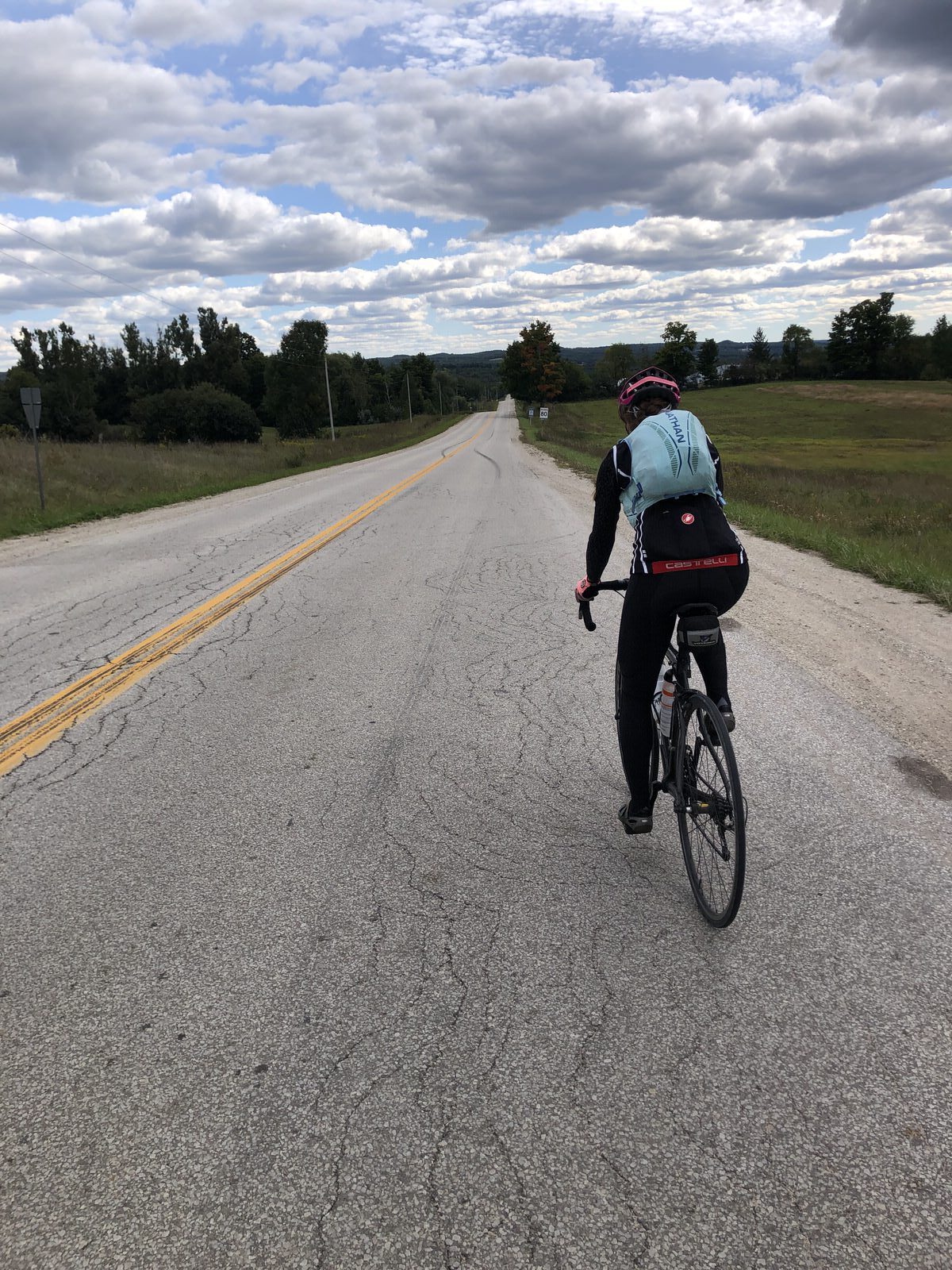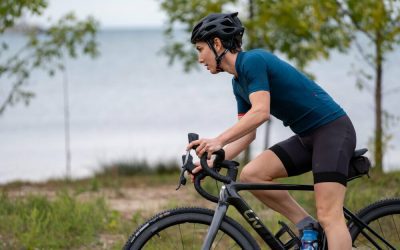Using gear you already have plus free resources, you can plan your next trip now! If you can’t stop thinking about bikepacking as a former hiker, or you’re a cyclist with zero bike touring experience, one of the things keeping you from heading out in search of adventure might be the initial cost of bikepacking, plus the continual expenses along the road. Unlike hiking, you have an expensive machine to maintain (and it doesn’t love getting wet), and the gear needed can seem expensive if you look at bikepacking-specific options. While bikepacking-specific panniers and racks are awesome, you can test the waters with some hacks to your current bike setup and hiking/camping gear, turning your normal bike into a touring machine without breaking the bank.
Of course, the biggest, best tip we’ve gotten on the show/that we’ve learned the hard way is to JUST GET STARTED. This might mean camping in your backyard, hitting a hotel instead of bringing a tent, or having someone meet you at a campsite with your gear. Just try something!
LISTEN: Bikepacking with Joe Cruz
http://ConsummateAthlete.com/bike-packing-joe-cruz/
Here are a few ways to bikepack on the cheap, from your packing list to your bike to your route-planning, eating, showering, and (let’s be honest, the most important), wifi-ing on the road.
Keep Gear on the Cheap
Spend On Your Road Tires
If you’re running road tires, it’s a heftier initial investment, but buying the burliest tires—like Continental Gatorskins—to start will save you a lot of headaches down the road, compared to cheaper options that will be more prone to flats. (You could also consider converting to tubeless tires for even better flat protection.) Another worthwhile investment, if you haven’t ridden in a while: a tune-up from your local bike shop. Taking care of problems, like rusted cables, before you’re on the road can mean a cheaper fix. (Think about pre-trip bike maintenance like filling your car’s gas tank before it’s empty versus running out of fuel on the side of the highway and needing to pay for a tow truck.)
And Have the Right Gear When You Roll
An ounce of prevention is worth a pound of cure. Buying tubes one at a time at bike shops will cost you big-time, so start your trip with a few spares purchased in bulk, plus a full patch kit so you don’t waste tubes that just have a tiny puncture. Lastly, a handheld small pump that’s capable of pumping to at least 70PSI will keep you rolling smooth and avoiding pinch-flats. This one from Topeak even has a gauge so you can’t convince yourself that your tire is ‘pumped up enough’ when it hits 15PSI.
Make a Back-rack Work with Your Hiking Gear
With a back rack like this easily-attached one from Topeak, some hiking bags can convert to pannier-style bags with some creative strapping. Your sleeping bag and bivvy sack can slide into a Sea to Summit waterproof bag and strap on to the top of your back rack with some bungee cords (and spring for this $7 cargo net from Topeak to cover it all and allow for a spot to stash a sandwich or extra water bottle). Panniers can easily be crafted from old messenger bags or tote bags that zip, with these instructions.
And Go 90s style for Your Handlebars
Get creative with a fanny pack as a handlebar bag. The shapes are similar enough that with some creative hole-punching and a few zip ties, you can fashion and easy handlebar bag with that fanny pack your mom has lying around from the 90s.
Add Straps to a Day Pack
Need more room for your gear? Use your hiking day pack. You can make it more bike-friendly by changing the position of the chest and waist straps slightly and tightening up the shoulder straps to bring the bulk of the pack higher on your back. If you have an old backpack that doesn’t have front straps, with a bit of DIY sewing action or even just using cinch straps, you can add a chest strap and waistband to keep it from slipping around while you pedal.
Prep for Maintenance
Bring a rag (or plan to wreck a tshirt) as well as some bike lube and a decent multi-tool with you as well, because you’re unlikely to make it through a trip without needing to wipe down your bike after getting it soaked in a rainstorm, or having to relube your chain after a windy day made it brown with dust, or being forced to tighten literally every bolt on your bike after a particularly washboard-y section of gravel road. A few minutes of bike maintenance each time you stop for the night can save you big bucks on pricier repair bills.
Combine Cycling + Hiking Apparel
You can make almost every piece of hiking gear work as cycling apparel with a few modifications. Raincoats for hiking will be fine for biking, and any merino wool or polyester hiking apparel will be just as sweat-wicking as a jersey (and easier to hang out in!). For both packing and money-saving, skip bike-specific gear with the exception of bike shorts. But DO spend money on a decent pair of bib shorts to keep your nether regions happy on long days in the saddle. Rain pants can go over your bib shorts, but use a cinch strap or reflective cuff to keep pant legs out of your chain.
Minimalist Bikepacking: The Gear Trades I’d Make
http://ConsummateAthlete.com/minimalist-bikepacking-the-gear-trades-id-make/
Ship Supplies Ahead
Thur-hikers have been doing this for years, but bikepackers can equally take advantage of having packages of food from Amazon or Thrive Market sent to town post offices along their routes. Sending your staples (including extra bike tubes when needed) can help you a) save on your favorite fancier items, like Epic Bars, that are cheaper bought in bulk, and b) help you avoid making impulse purchases when you are in grocery stores, because you already have what you need.
On Just Get Started in a Sport — Or, What I Learned My First Time Bikepacking
http://ConsummateAthlete.com/on-just-get-started-in-a-sport-or-what-i-learned-my-first-time-bikepacking/
Useful Apps and Tools for Bikepackers
Warm Showers App
If you don’t already know about this app, it’s a lifesaver: Warm Showers is a community-driven app for cycling tourists and people who open their houses (and bathrooms) to them. You create a profile on the site and can ask for a spot to stay (or just to get a shower and a break), and hosts respond. The catch is that when you sign up as a touring cyclist, you’re also saying that you intend to open your home to other touring cyclists when you can—make sure you’re willing to uphold that end of the bargain, because karma will come back to you.
Freecampsites.net
To find free spots to set up camp, check out freecampsites.net for maps of what’s available in the area. But don’t forget about using a public campground for day access: often, they’re free for cyclists to ride in, or they’re under $5. And more and more often, the amenities at campgrounds are surprising. We’ve been at campsites where, for $7 for parking, we spent the day swimming and hiking, then used the campground’s wifi to logon and work from a picnic table (and recharged all of our devices!) before hopping in the showers in the restrooms.
Snag Amenities in Unexpected Spots
Grocery stores and gyms are great for more than just food shopping and showering. A lot of grocery stores have indoor seating tucked away in a corner, or at least have a few picnic tables outside, and many now have wifi. They also always have (often single stall) restrooms, so they can be great spot to do a solid sink shower. Local YMCAs are often sub-$10 for a day pass, and can have a huge range of amenities, from seating and wifi to showers and saunas, and even sometimes, a way to do laundry (or you can always wash your clothes in the shower and hang out in the sauna to dry them!). Community pools are often a little cheaper, but often have wifi and showers as well as swimming.
Take Advantage of Free Local Amenities
When you roll into town, you can skip spending big bucks at coffee shops or hotels by taking advantage of Visitor Welcome Centers and libraries. Rainy day? Public libraries are a free, quiet place to sit, read or work (and recharge phones and laptops). Most libraries and welcome centers also have free wifi as well as clean, often-underutilized restrooms.





